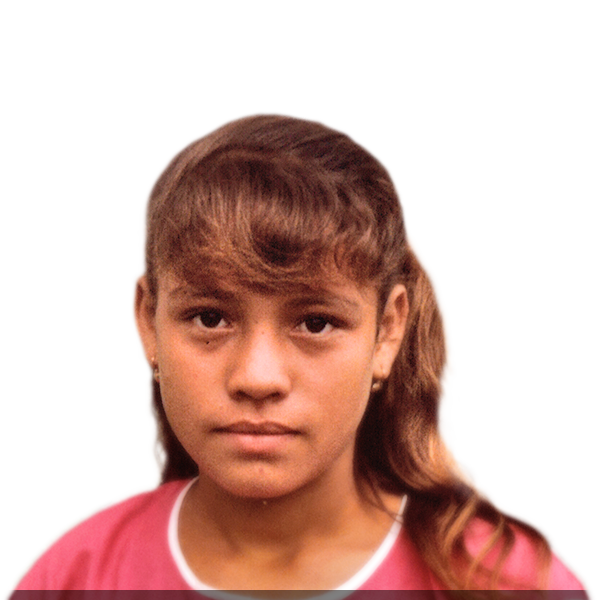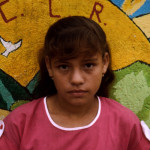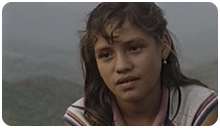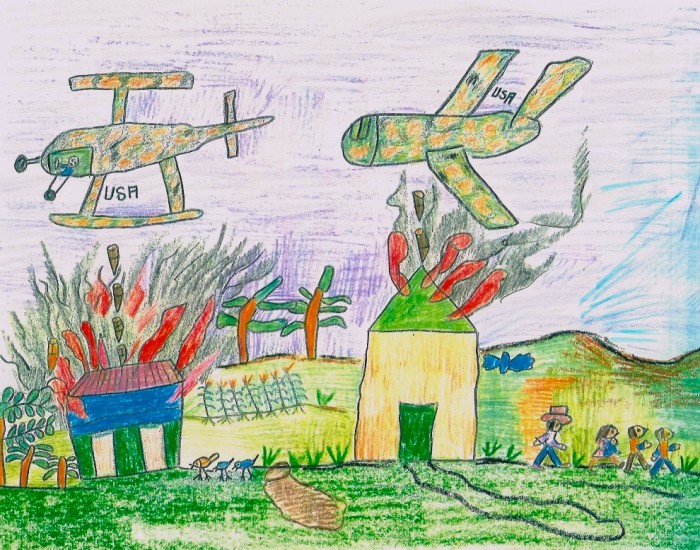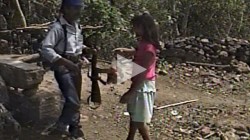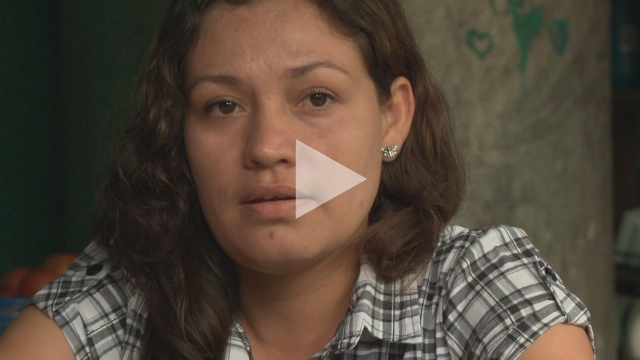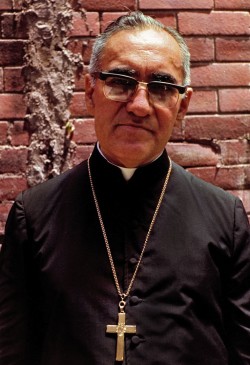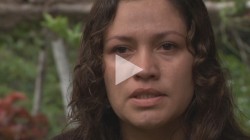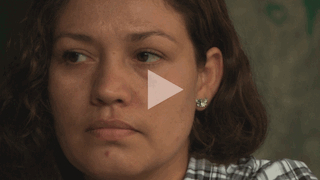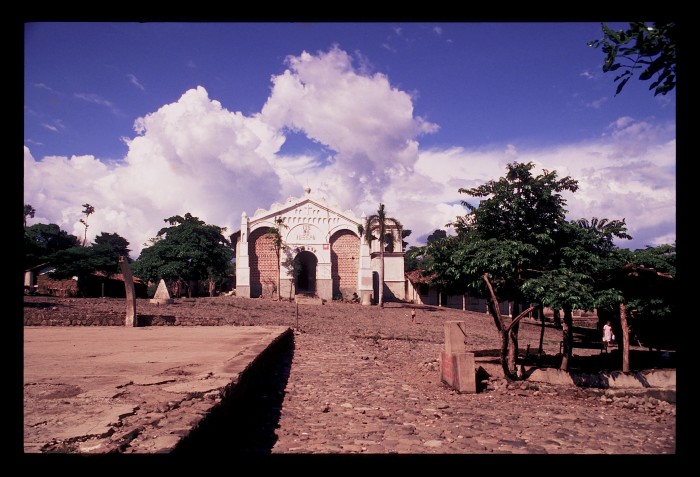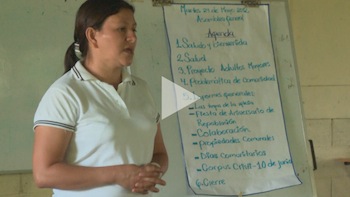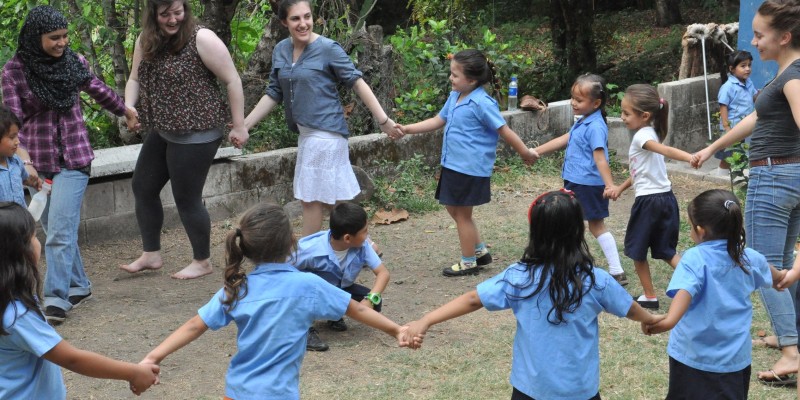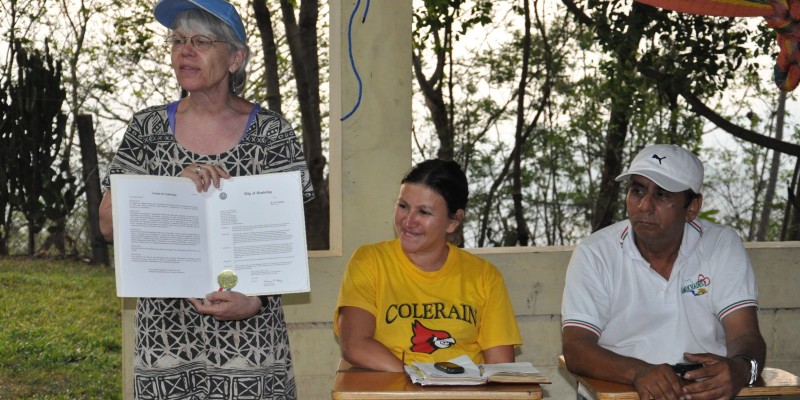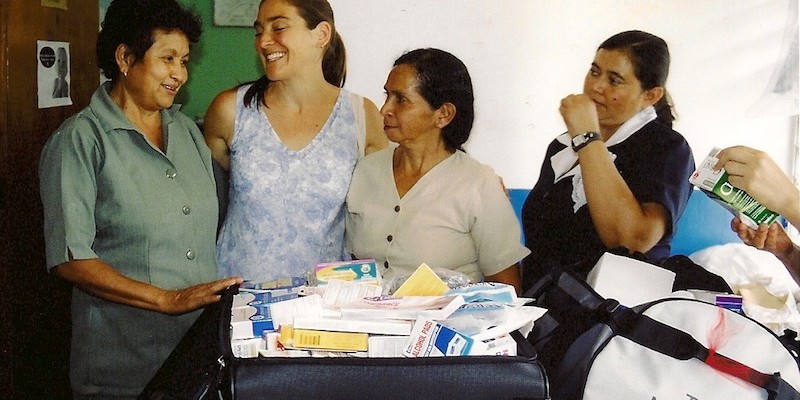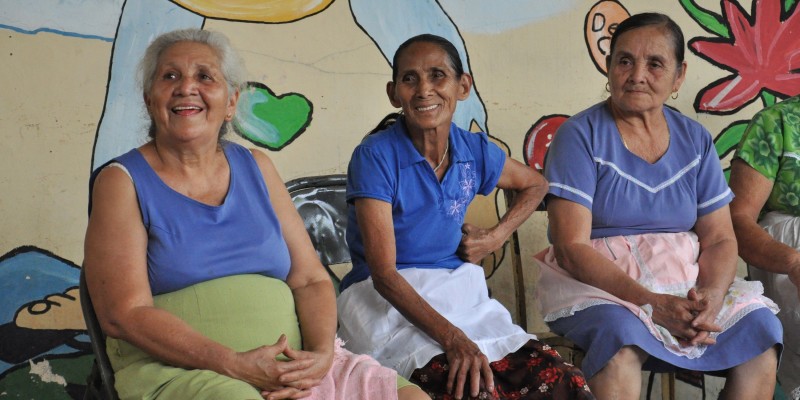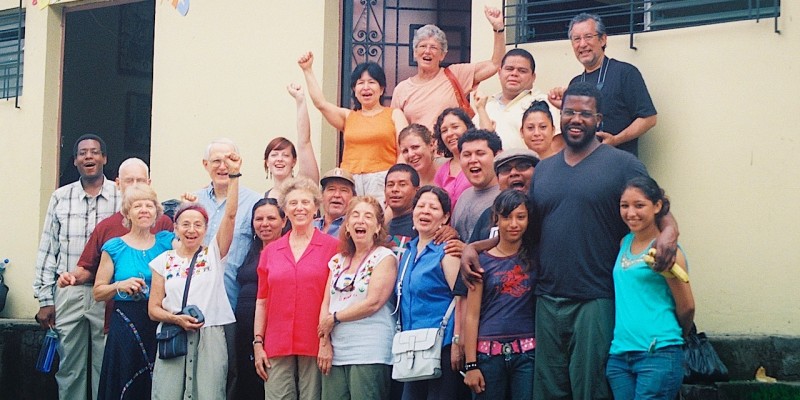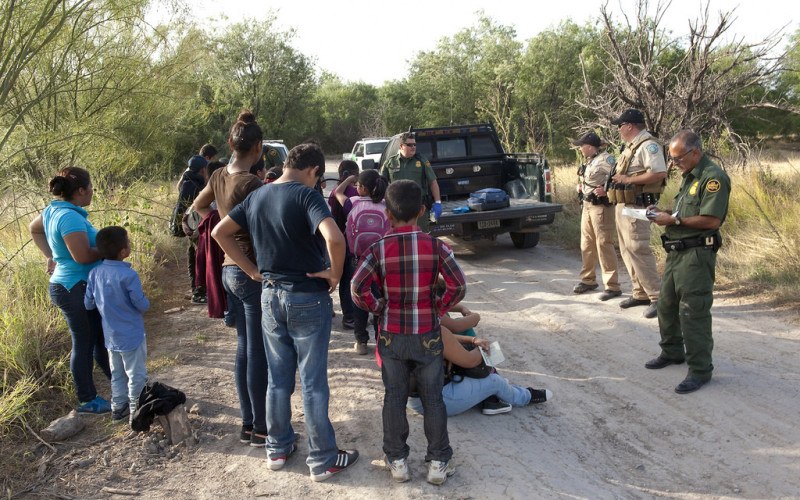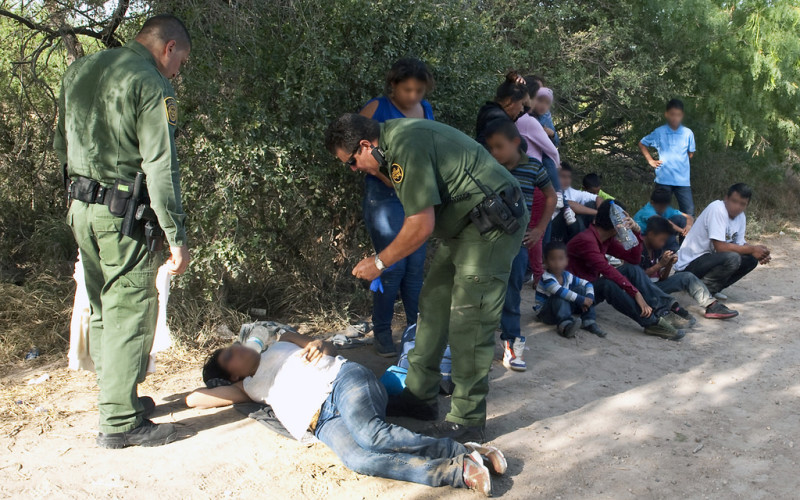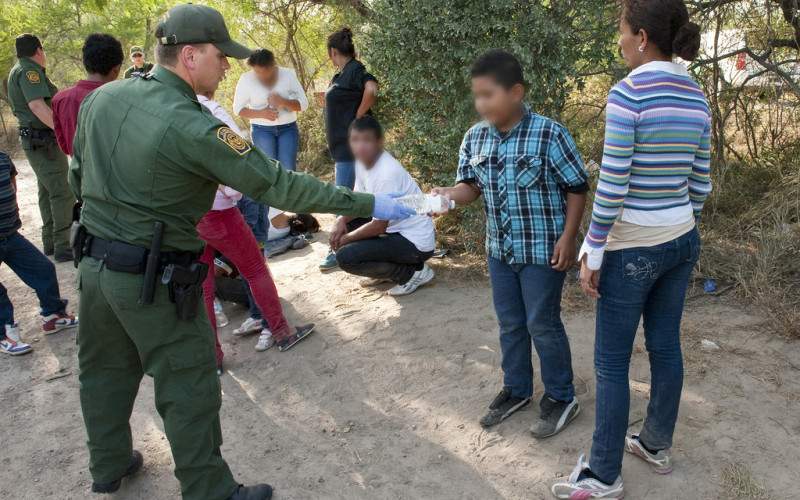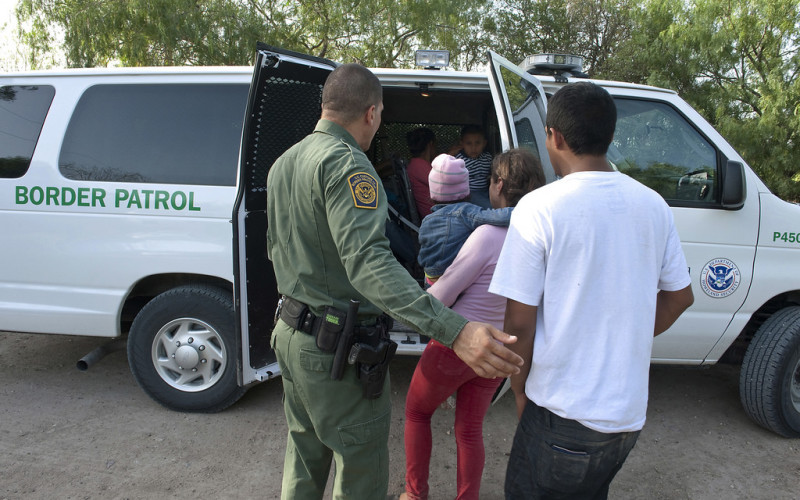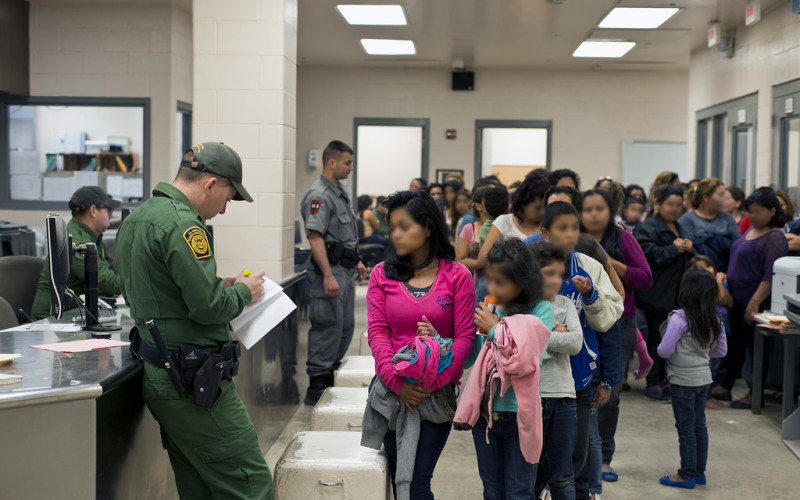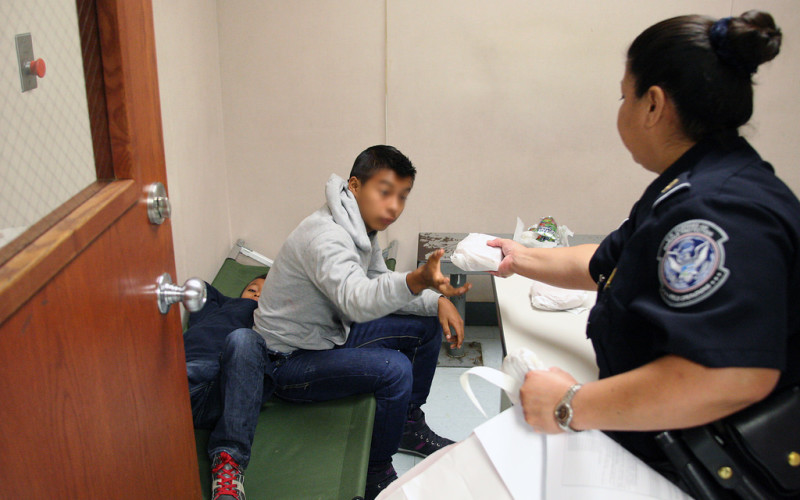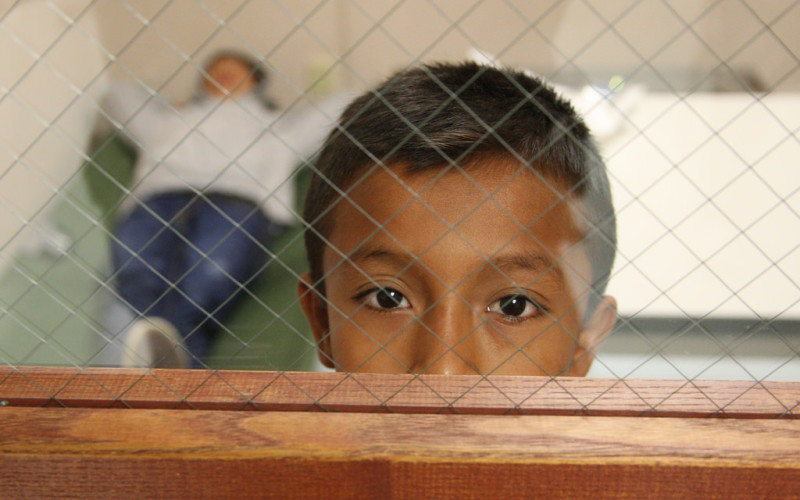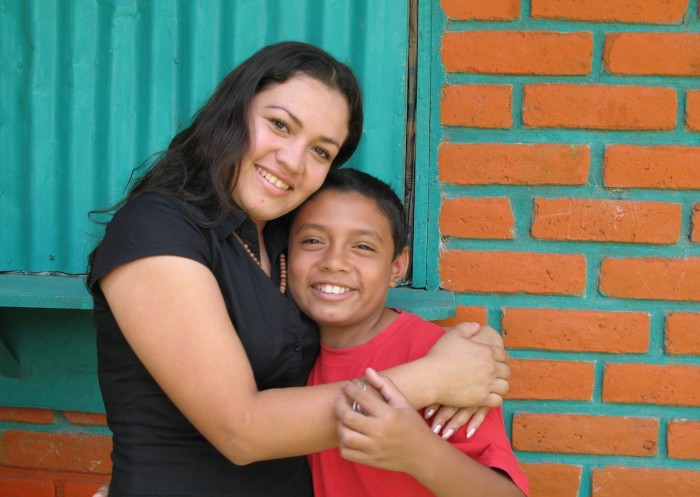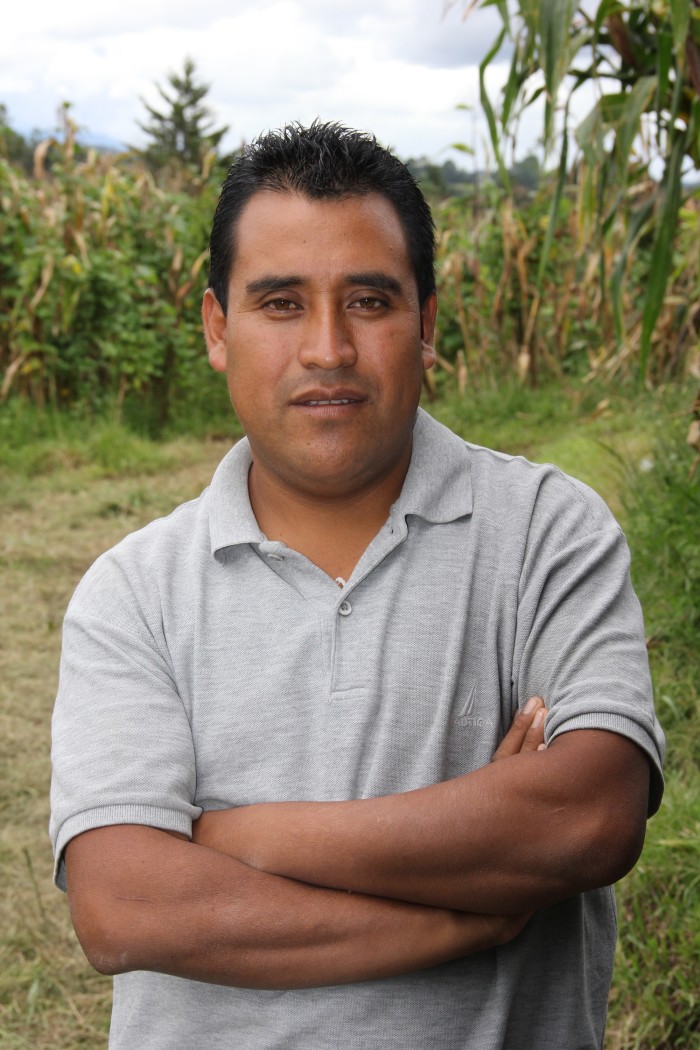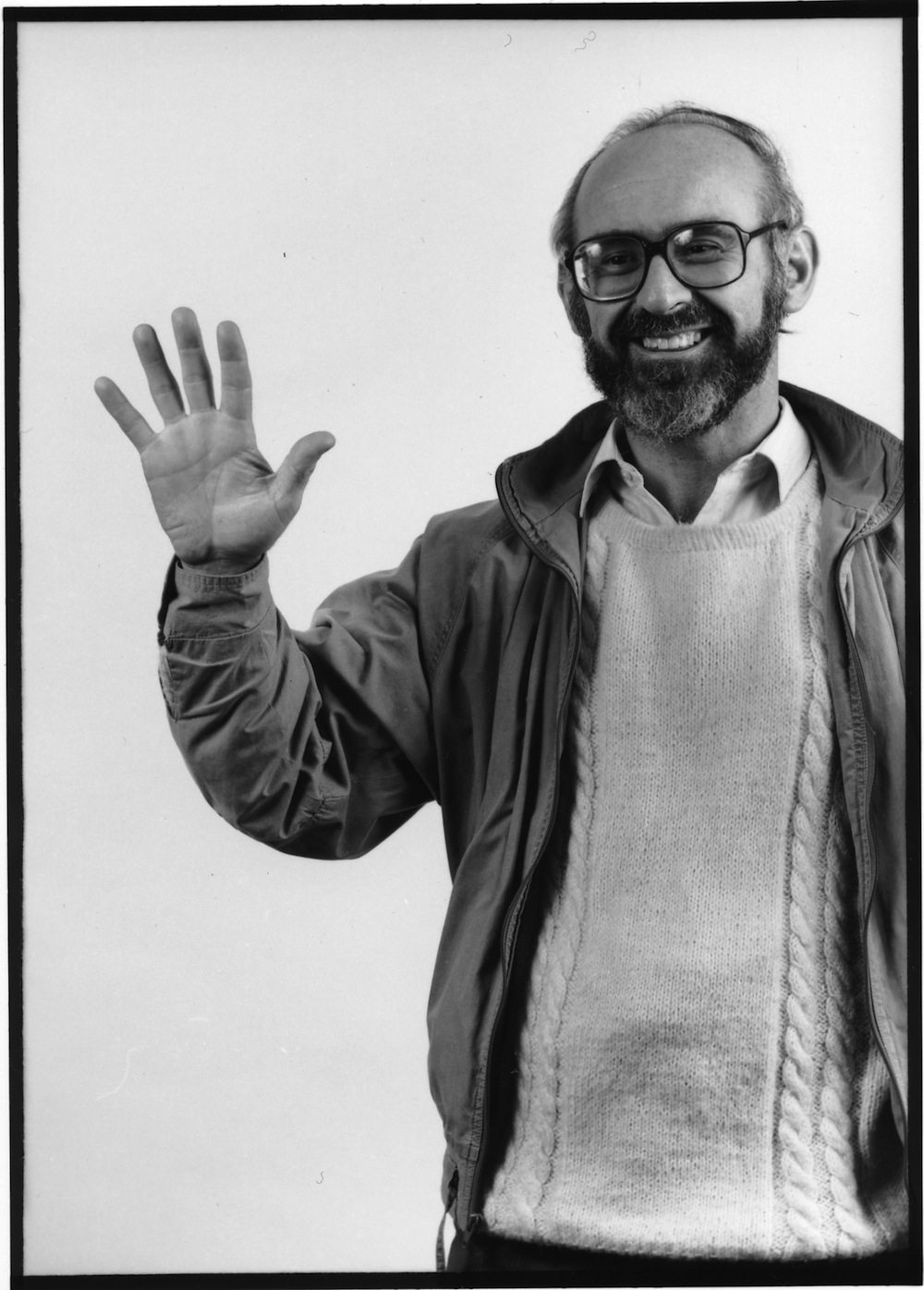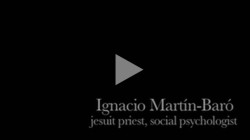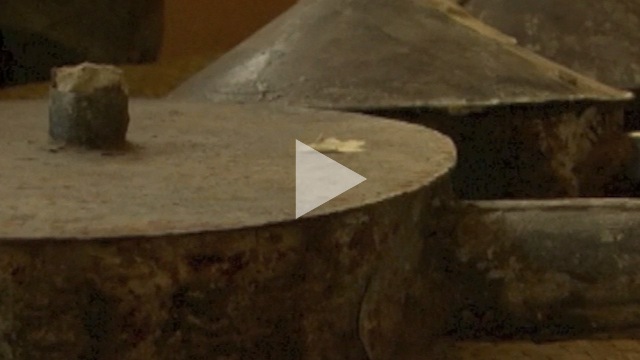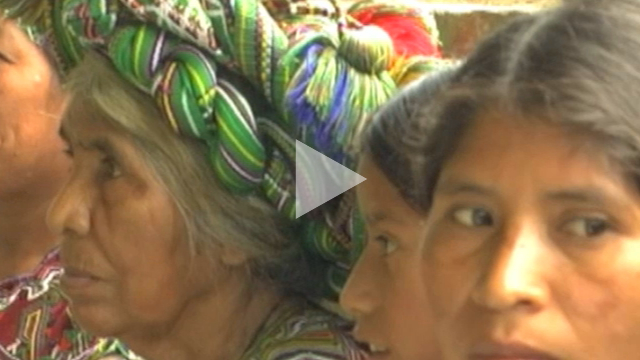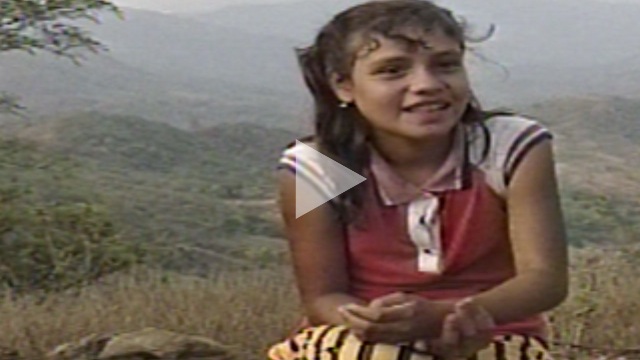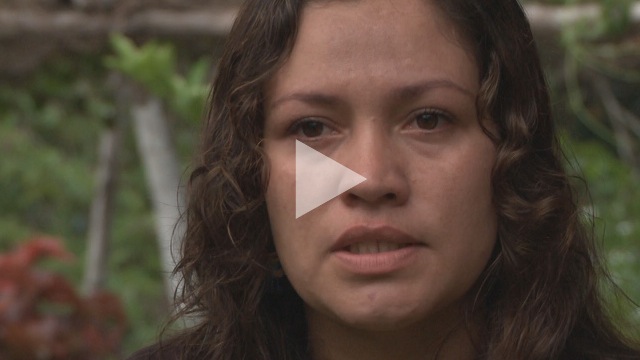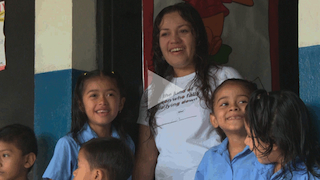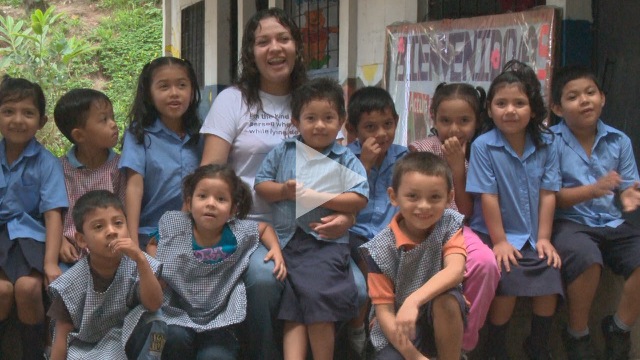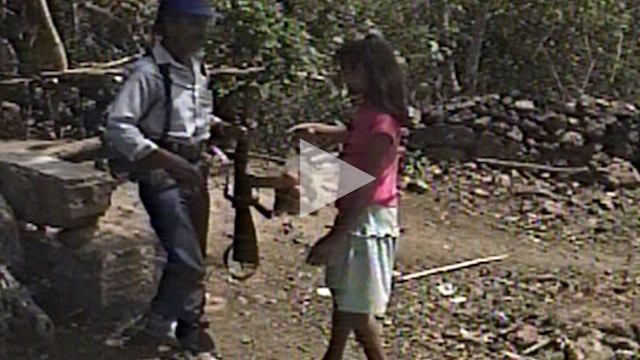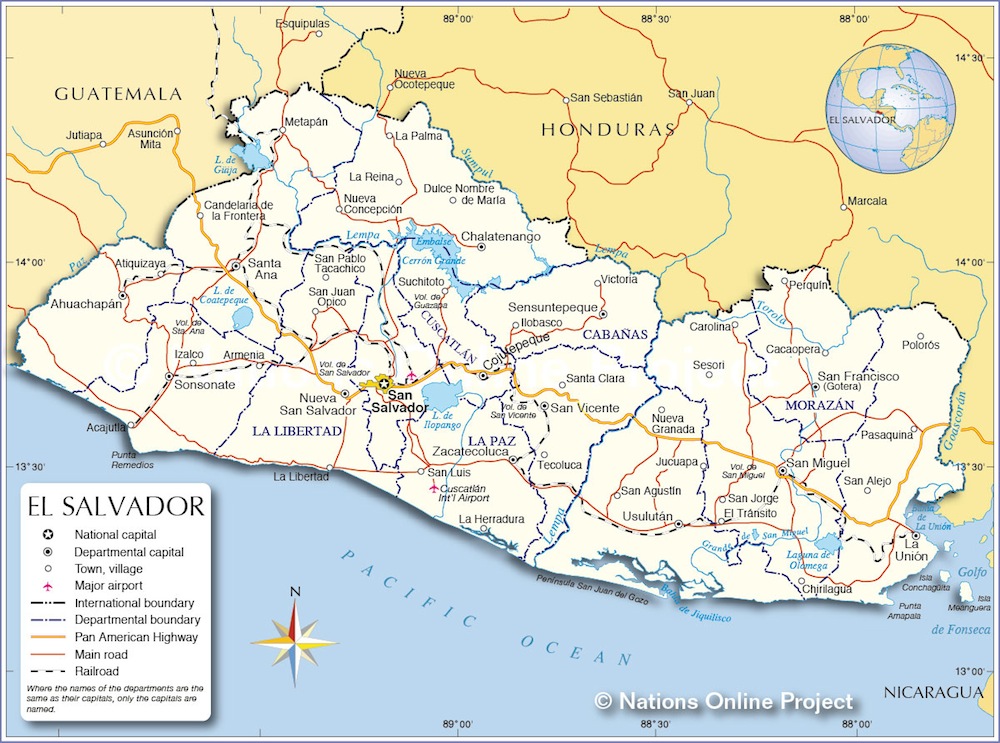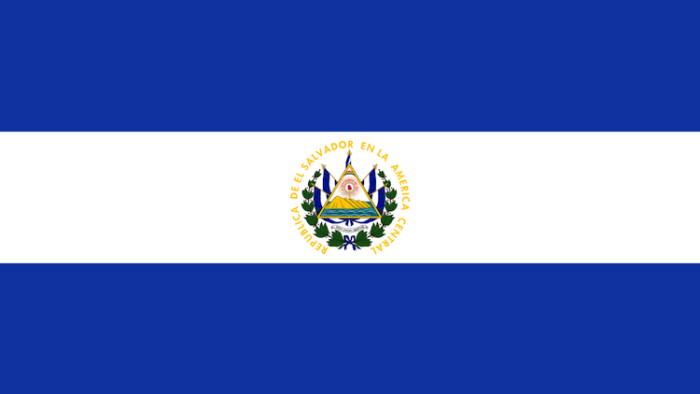Why Do the Planes Say “USA” on Them?
Children wrote “USA” on the planes dropping bombs in their drawings because the United States provided large sums of money to the government of El Salvador during the civil war. Between 1980 and 1992 the US sent more than $6 billion in military and economic aid, an average of over 1 million dollars per day.
Years of repression and rebellion escalated into full fledged war in 1980, when a coalition of leftist guerrilla groups, called the FMLN, united to seek to overthrow the military dictatorship. They fought to implement social and economic reforms to benefit the poor, insure respect for human rights and promote a more democratic government. Yesenia’s father was one of thousands of peasants, workers and ordinary citizens who joined the FMLN, convinced that armed struggle was the only way to bring about lasting change.
The US government did not see things that way. They saw it in their national interest to side with and finance the military dictators and conservative forces blocking reform, often in the name of anticommunism. They turned a blind eye to the atrocities they knew the armed forces were committing.
In 1992, UN sponsored Peace Accords finally brought an end to the war, in which 75,000 people died. A Truth Commission was established, which reported that the government deliberately terrorized, kidnapped, massacred and murdered civilians. It found the FMLN responsible for 5% of the human rights violations perpetrated during the war, while the government was responsible for 85%. Among the many atrocities attributed to the government security forces were: the assassination of the Archbishop of San Salvador, Oscar Romero; the abduction, rape and murder of four US churchwomen working in El Salvador; the massacre of over 1000 peasants near the village of El Mozote; and the slaying of 6 Jesuit priests, their housekeeper and her daughter.
Following the Peace Accords, the FMLN disarmed and became a political party. They won the last two presidential elections, in 2009 and 2014.
Sources & Links
The Commission on the Truth for El Salvador. “From Madness to Hope: The 12-Year War in El Salvador.”
http://www.usip.org/sites/default/files/file/ElSalvador-Report.pdf
The Center for Justice and Accountability
https://cja.org/where-we-work/el-salvador/
Retro Report. “A Search for Justice” video, 2014.
http://www.retroreport.org/video/a-search-for-justice/
What is Solidarity?
Growing US intervention in Central America during the 1980s outraged many Americans, who joined together in the solidarity movement. Religious, student and labor leaders organized a grassroots movement with two main purposes. They wanted to change US foreign policy in the region. And they wanted to show their support for the Central American people in their struggles for peace and justice by providing humanitarian aid, offering safe haven for refugees fleeing the wars, and establishing “sister cities.”
Yesenia’s hometown, San José Las Flores, became a sister city with Cambridge, Massachusetts. San José Las Flores was in one of El Salvador’s most conflictive regions. Residents began to flee in 1980, including Yesenia’s family. She was just one month old. A few years later no one was left. But on June 20, 1986 a brave and determined group of families made an arduous journey through thick mud and military checkpoints to return to the abandoned ruins of their hometown. Delegates from the US and the Catholic Church in El Salvador accompanied them.
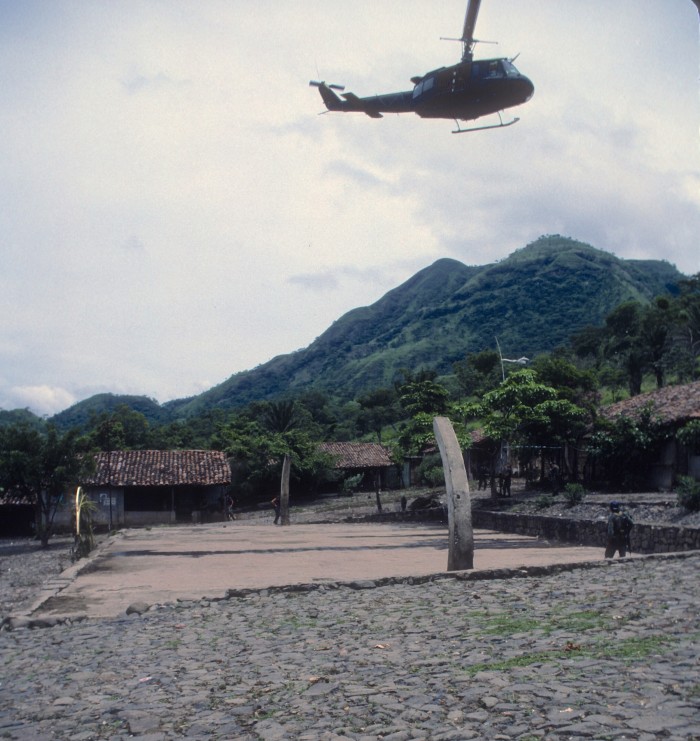
Salvadoran army helicopter hovers over town center. Photo courtesy Cambridge – Las Flores Sister City Project.
Those families were taking a huge risk in moving back to San José Las Flores. In the midst of a civil war, they demanded to be recognized as a civilian population with the right to live in their place of origin. The support of their sister city in the US helped mitigate the danger. Soon other families who had been hiding in surrounding areas also moved back. Conditions were terrible and over a dozen children died in just the first month.
As San José Las Flores and the other sister communities became more established, their US counterparts sent material goods like medicines and school supplies as well as money to rebuild homes, schools and churches. They led delegations to strengthen ties and friendship and on fact-finding missions. They documented and denounced human rights abuses, and lobbied Congress to cut off aid for the Salvadoran military.
Concerned citizens from the US were not the only ones who acted in solidarity with San José Las Flores and the people of El Salvador. Europeans, particularly church groups and solidarity committees from Spain, played a crucial role in accompanying the people of Las Flores as they struggled to defend themselves as a civilian population, rebuild their town’s infrastructure and pursue economic development projects. Spanish organizations also funded scholarships to a local university two hours from the town. The community selected five promising students and Ana Navarrete was one of them. She received a teaching degree after six years, others studied accounting and administration. By awarding the scholarships the town of Las Flores was investing in training the next generation of leaders.
European and US solidarity did not end with the war. Today there are 17 paired communities in the US – El Salvador Sister City network. The US committees continue their work to defend human rights, promote social justice and advocate on behalf of the communities in issues like US trade policy, anti-mining initiatives and immigration. Delegations visit regularly between the sister cities and new generations are carrying on the solidarity begun over 25 years ago.
SOURCES & LINKS
“Brief History of San José Las Flores,” June 6, 2015.
https://christinainelsalvador.wordpress.com/2015/06/28/brief-history-of-san-jose-las-flores-photo-narration/
Committee in Solidarity with the People of El Salvador
http://www.cispes.org/section/history-cispes/
Historia de la Comunidad San José Las Flores. Unattributed and undated mimeo given by delegation from Las Flores to Cambridge, 2009.
International Christian Service of Solidarity with the Peoples of Latin America “Oscar Romero”
http://www.sicsal.net/TripticoSicsalIngles.pdf
San José Las Flores website
http://lasflores.sumpul.com/
Share El Salvador
http://www.share-elsalvador.org
US-El Salvador Sister Cities network
http://elsalvadorsolidarity.org/
Why So Many Separated Families?
Today, about one out of every five Salvadorans lives in the United States. People fleeing the war came to the US in increasing numbers during the 1980s. In the 1990s and after, immigration continued to grow, prompted by natural disasters, increases in both poverty and violence, and by the people already in the US sending for family members.
In the summer of 2014, the number of unaccompanied children from El Salvador – as well as from Guatemala and Honduras – coming across the US border with Mexico increased dramatically. The media report they are fleeing violence and insecurity in their homelands. Many have at least one family member in the US with whom they hope to reunite.
In 2013, when he was sixteen, Yesenia’s son left El Salvador by himself to go to the United States. Yesenia felt she could no longer protect him from the dangerous environment in El Salvador. He now lives with his father and is attending high school.

Member of Mara Salvatrucha gang displays tattoos inside prison. Chalatenango, El Salvador, 2007. Photo by Moisen Saman.
Looking more closely at the recent history and the economic roots of the crisis can help to more fully explain the current situation. Decades of conflict in Guatemala and El Salvador left both countries in shambles. Gang and drug related violence is often mentioned as a key factor in the youth exodus from Central America. The growth of prolific gangs in Guatemala and El Salvador can be traced to gang members being deported from Los Angeles and other large US cities. US law enforcement has increasingly utilized massive deportations in an attempt to control drug and gang activity in the US. The deportees found a fertile environment for gangs as both countries had become increasingly violent in the aftermath of the wars. The legions of young men who had been trained to use weapons, together with large numbers of homeless children, could find a place for themselves in gangs.
Central America is smack in the middle of the geographic corridor linking the drug producing regions of South America with the drug consuming country to the north, the US. As the demand for drugs in the US grows ever larger, maintaining trade routes through Central America results in profound damage done to their people and countries. As the amount of drugs flowing through the region grows, drug and gang violence become increasingly intertwined.
Ongoing poverty also continues to be a major force driving Central Americans north, stemming in part from the still vastly unequal distribution of land and wealth in the region. Trade policies, like the Central American Free Trade Agreement (CAFTA, signed in 2005) were touted as bringing jobs, prosperity and peace which, in turn, would reduce drug and gang violence and emigration. But that hasn’t happened. Instead, critics suggest the treaty’s promotion of cheap agricultural imports from the US, including staples like corn and beans, has bankrupted many small farmers, causing some to leave the country. Stipulations in the treaty open the door for foreign corporations to engage in megaprojects like mining and hydroelectric, resulting in displacement of communities as well as serious environmental degradation.
Like Yesenia, many other parents do not feel they can provide a secure environment in which to raise their children. That, combined with the lack of educational and employment opportunities for youth, cause many to try their luck heading north. Those that stay survive in part because of the remittances, money sent home from relatives abroad, which now provide over half the income for Salvadorans.
Sources & Links
Chomsky, Aviva. “America’s Continuing Border Crisis.” TomDispatch.com, August 24, 2014.
http://www.tomdispatch.com/blog/175885/tomgram-A-aviva-chomsky-C-what-s-at-stake-in-the-border-debate/
Gammage, Sarah. “El Salvador: Despite End to Civil War, Emigration Continues.” Migration Policy Institute, July 26, 2007.
http://www.migrationpolicy.org/article/el-salvador-despite-end-civil-war-emigration-continues
Lykes, M. Brinton and Kalina Brabeck. “Family Values? US Tears Apart Migrant Families.” The Huffington Post, October 3, 2013.
http://www.huffingtonpost.com/m-brinton-lykes/migrant-children_b_4038548.html
Alianza Americas
https://www.alianzaamericas.org/?lang=en
Public Citizen. “Central America Crisis Belies CAFTA’s Empty Promises.” August 1, 2014.
http://citizen.typepad.com/eyesontrade/2014/08/central-america-crisis-belies-caftas-empty-promises.html
Teaching for Change. “Teaching the Truth about Youth Migration from Central America.”
http://www.teachingforchange.org/youth-migration-from-central-america
“Since I Survived the War…”
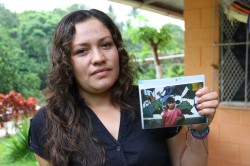
“I thought since I survived the war, surely I can move on and confront the challenges that life presents each day.”
Yesenia found a way to turn many of her difficult experiences during the war years into a foundation of strength to help her through other challenging times in her life.
Diego tries to forget the “great sadness” of the war in order to move forward. (See “Diego Talks About the War” in “Watch More of Diego.”) These are just two strategies that these young adults have developed to confront their past. Each survivor experiences the many effects of armed conflict in her or his own way.
Ignacio Martín-Baró, a social psychologist, teacher, scholar and Jesuit priest in El Salvador, studied the effects of trauma caused by war, and by gross violations of human rights. He dedicated his life to the cause of social justice in El Salvador, and was murdered because of it. Martín-Baró was one of six Jesuits killed by a US trained Salvadoran army battalion, along with their housekeeper and her daughter, in San Salvador in 1989.
“Without doubt, of all the deleterious effects of the war on the mental health of the Salvadoran people, the undermining of social relations is the worst, for our social relations are the scaffolding we rely on to construct ourselves historically both as individuals and as a human community.” – Ignacio Martín-Baró
Drawing on his research and lived experiences, Martín-Baró wrote that the trauma suffered by victims of state-sponsored violence could be treated most effectively through community-based healing processes. The therapies developed primarily in the US to treat what many psychiatrists and psychologists there diagnosed as post-traumatic stress disorder (PTSD) in victims and survivors of war led these helping professionals to focus on a single patient’s recovery from a particular traumatic incident. Martín-Baró insisted that the needs of Salvadorans required a different psychology, rooted in the experiences of decades of repression and war. He described trauma as psychosocial, that is, relating to an individual’s psychological development in interaction with his or her social environment. He clarified that trauma is ongoing in contexts of continuing structural poverty, armed conflict, and impunity, and called for a “liberation psychology” rooted in the lived experiences of those most deeply affected by oppression.
Martín-Baró’s groundbreaking ideas continue to inspire the work of community leaders and psychologists in El Salvador, throughout Latin America, and in many other countries struggling through post-conflict mental health issues. Some of this work is supported by a fund established in the U.S. to carry out work rooted in his ideas. The following projects are just a few examples of Martín-Baró’s philosophy being put into practice.
Mental Health and Living Memory Program, Centro Bartolomé de las Casas (CBC), San Salvador
In Arcatao, a town 10 miles from San José Las Flores, the CBC held mental health workshops that revealed the profound wounds left by the war “in the bodies and souls of the survivors.” They worked with survivors to help them develop and give their public testimonies – what they call the “living or surviving memory” – which are powerful and vital experiences for the community healing process.
In 2007, together with the local Catholic Church, the CBC inaugurated the Museum of Memory (Museo de la Memoria). They published a booklet of the collected testimonies and then created the Museum from objects, photographs and other items they also gathered.
“No development will be possible if this slice of memory – so present, so hidden, and so disturbing – is not taken up again, come to terms with, and restored. Nice words and thousands of dollars in aid are not enough. It’s necessary to recover life and hope through new means.” – Centro Bartolomé de las Casas
The Maya Ixil Education and Training Center (ACEFOMI), Chajul, Guatemala
ACEFOMI works with women in Chajul and surrounding villages, one of the areas most devastated by the violence in Guatemala. They have developed workshops, trainings and basic educational materials with the goal of creating a group-based process for remembering the past and enhancing women’s self-esteem. They seek to help women better understand the social realities that contributed to the armed conflict and the violation of their rights as Maya women. This approach of “participatory and popular education” provides resources through which girls and women can organize their communities toward creating a more just future.
Recently, ACEFOMI has extended their work to the youth of the region, exploring topics related to mental health and legacies of the armed conflict in the context of globalization and migration. They are preparing youth leaders to carry on the work among their peers.
Note: The Martín-Baró Initiative for Wellbeing and Human Rights generously contributed the video footage for this section.
Sources & Links
The Martín-Baró Initiative for Wellbeing and Human Rights
http://www.martinbarofund.org
Watch More of Yesenia
El Salvador Maps & Facts
Size: 8124 sq. miles, the size of Massachusetts
Population: 6,340,000 (2013)
Capital: San Salvador
People: mixed Spanish and indigenous (mestizo)
Language: Spanish
Religions: Roman Catholic, Protestant (including evangelical)
Independence (from Spain): 1821
- 34.5% of the population lives below poverty level.
- 84.5% of people over age 15 are literate.
- Life expectancy among lowest in Latin America.
- Problems related to crime, gangs and the drug trade pose serious security problems for El Salvador.
- It is the most densely populated country in the Americas.
- Large scale natural disasters struck El Salvador right after the war, making recovery difficult: Hurricane Mitch in 1998 and earthquakes in 2001, resulting in over 1200 deaths and one million left homeless.
- El Salvador’s economy is heavily dependent on remittances, money sent home by Salvadorans living abroad (mostly in the US).
- In 2002, El Salvador stopped using its own currency and adopted the US dollar.
QUICK FACTS ABOUT THE WAR
Dates: 1980 -1992 (12 years)
In 1980 the five major leftist revolutionary organizations merged to form the Farabundo Martí National Liberation Front (FMLN). Their guerrilla forces opposed government military and right-wing paramilitary forces.
Over 75,000 civilians were killed.
The Truth Commission attributed 85% of acts of violence to state agents (military, paramilitary) and approximately 5% to the FMLN insurgents.
Historical Timeline
1000 CE – Immigrants from what is now Mexico begin moving south. They are Pipils and speak Nahuat. They call their new home Cuzcatlán – Land of the Jewels – because of its beautiful and fertile lands.
1524 – 1821 – Spanish conquerors led by Pedro de Alvarado invade El Salvador. The Pipils resist but are eventually defeated. By the late 1800s, 80% of the Pipil population have been killed. Survivors intermarry with Spanish colonists, producing a large mestizo population.
1821 – 1838 – In 1821, El Salvador declares independence from Spain, joining the United Provinces of Central America. Salvadoran politics divides into Conservatives and Liberals (see Guatemalan Historical Timeline).
1840 – Upon dissolution of the United Provinces of Central America, El Salvador gains complete independence.
1840 – 1931 – By the end of the 19th century, coffee becomes the major export crop. An oligarchy known as Los Catorce, or Fourteen Families, owns most of the fertile land. There is almost no middle class and the rest of the country lives in poverty.
1931 – General Maximiliano Hernández Martínez seizes and holds power until 1944. There is economic and political turmoil led by peasants and urban workers.
1932 – Some 30,000 people are killed in what is called La Matanza (The Slaughter). Communist leader Farabundo Martí is captured and executed. Hernández orders soldiers to kill anyone who looks or sounds indigenous, resulting the death of many Pipils. Those who survive hide their heritage, discard their traditional clothing and stop speaking their language.
1932 – 1969 – El Salvador continues to be run by the military either directly or through military controlled political parties. In the 1960s, more peasants lose their land as cotton and sugar join coffee as major export crops.
1969 – El Salvador and Honduras engage in brief but bloody war provoked by thousands of Salvadorans working on banana plantations in Honduras.
1970 – 1979 – Students, teachers, workers and religious leaders organize to demand reforms for a more equitable society. Both the 1972 and 1977 presidential elections are fraudulent. Social discontent grows. As protestors are met with violence, many no longer see legal opposition as an option. Wealthy landowners and businessmen create political organizations that are forerunners to the right-wing Nationalist Republican Alliance (ARENA) party. They begin to organize and finance death squads. Violence increases dramatically in early 1979 as government sponsored killings, mass arrests and tortures are directed against student and labor organizations and the Catholic Church. The hardline military block attempts at political reform.
1980 – Archbishop Óscar Romero is murdered while celebrating Mass, a day after appealing to soldiers in a sermon broadcast over the radio: “In the name of God… stop the repression.” Later that year, the armed opposition groups form the Farabundo Martí Liberation Front (FMLN), named after the leader of the 1932 uprising. In December, four American churchwomen are raped, tortured and killed. The country is now in full-fledged civil war.
1980 – 1989 – The Salvadoran military uses US funding and training to implement a counterinsurgency strategy designed to destroy all potential support for the guerrillas. Rural communities are bombed, tens of thousands of people are killed by the army and death squads. Large numbers of people flee their homes, some going to Honduras, Mexico and the US. The FMLN gains control of substantial territory in the north and sets up alternative local government. In 1984, US support helps elect Christian Democrat José Napoleón Duarte president. But ARENA gets control of the National Assembly and then the presidency in 1989, and despite continuing repression, social unrest grows and the popular movement mobilizes.
1989 – The government and FMLN initiate peace talks but they break down and the FMLN launches an offensive against San Salvador, the country’s largest city. After the government attacks and bombs poor neighborhoods, killing many civilians, the FMLN withdraws. On November 16, soldiers murder six Jesuit priests, their housekeeper and her daughter on the University of Central America campus. The killings are widely seen as an attempt to wipe out what the army believes is the intellectual leadership of the guerrillas.
1992 – On January 16, the Salvadoran government and the FMLN sign peace accords. The FMLN is recognized as a political party.
1993 – The United Nations releases a report on human rights during the 12-year civil war, placing the blame for 85% of violations on the government security forces. It also cites the FMLN guerrillas for some violations. The Congress approves a general amnesty for those accused of civil war atrocities, thereby institutionalizing impunity.
1994 – The first post-war elections with the FMLN participating as political party. The ARENA candidate wins the presidency with an FMLN-led coalition in second place as the main political opposition.
2001 – Massive earthquakes kill 1200 people and leave a million more homeless.
2002 – A US court finds two retired Salvadoran army generals living in the US responsible for civil war atrocities and orders them to compensate the victims who brought the case.
2009 – Mauricio Funes of the FMLN party is elected president. The FMLN also has a strong presence, though not a majority, in the Congress.
2013 – Truce established between two major street gangs, La Mara Salvatrucha (MS-13) and Barrio 18 (18th Street), whose numbers began increasing in the 1990s. The homicide rate falls significantly.
2014 – Salvador Sánchez Cerén of the FMLN wins the presidential election with a narrow victory. The gang truce falls apart and homicides skyrocket. Thousands of unaccompanied minors from El Salvador, Guatemala and Honduras flee to the US.
2015 – Murdered Archbishop Romero is beatified, after Pope Francis approved his status as martyr.
2016 – The Supreme Court struck down the 1993 amnesty law, paving the way for possible prosecution of those responsible for war crimes.
2017 – El Salvador becomes the first country in the world to ban metallic mining, due to its destructive impact on the environment, water supplies and people’s health.

